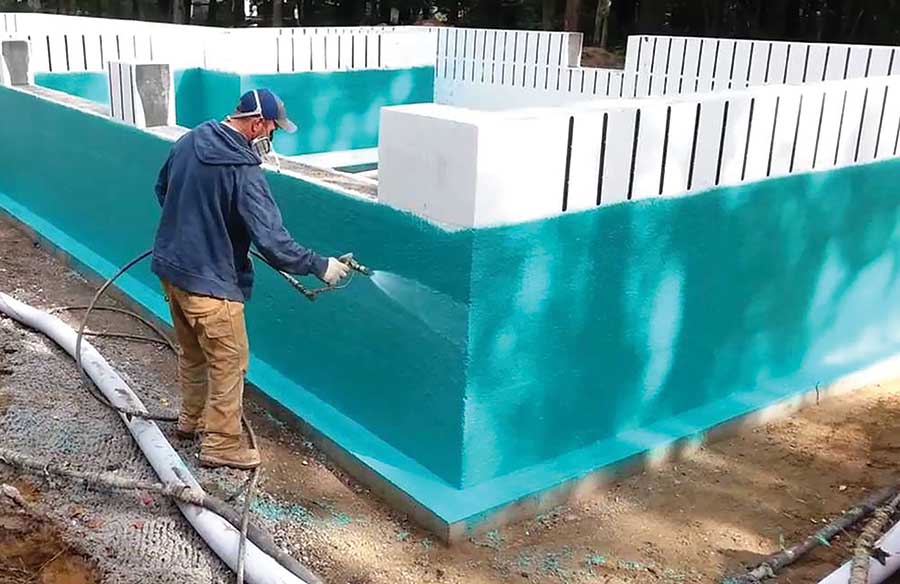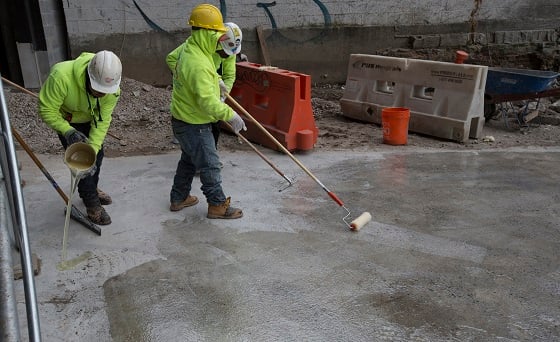Sorts of Waterproofing: Checking Out the Various Methods and Their Applications
Waterproofing is a crucial facet of building and maintenance. It shields structures from the detrimental impacts of water damages. There are numerous techniques offered, each with its distinct applications and advantages. From membrane systems to cementitious options, comprehending these choices is crucial for efficient execution. The option of waterproofing approach can substantially impact resilience and long life. Exploring these various methods reveals their distinct benefits and potential obstacles, motivating additional consideration of suitable services.
Membrane Layer Waterproofing Equipments
Membrane layer waterproofing systems function as a critical barrier against water intrusion in different frameworks. These systems commonly contain slim sheets made from materials like rubber, polycarbonate, or bitumen, which are applied to surfaces to avoid moisture infiltration. They can be mounted over or below grade and are specifically reliable in locations vulnerable to high water exposure, such as cellars, roof coverings, and foundations.The installation process includes cleaning the substrate, using adhesives or guides, and precisely suitable the membrane to ensure total coverage. Membrane layer systems can be either totally adhered, mechanically connected, or laid loose, depending upon the particular demands of the task. They offer resilience and versatility, suiting structural motions without endangering their waterproofing capabilities. Additionally, these systems can be enhanced with added layers for improved defense. Eventually, membrane waterproofing systems are crucial for safeguarding frameworks versus water damages and maintaining lasting integrity.
Liquid-Applied Waterproofing Coatings
Liquid-applied waterproofing finishes give a functional solution for securing surfaces from water infiltration - Sump pump discharge drainage Omaha. These coverings consist of fluid materials that, when applied, create a seamless, adaptable membrane. Their flexibility allows for application on various substrates, including concrete, metal, and wood. The finishes can be used in diverse environments, from domestic to industrial setups, making them ideal for roofing systems, structures, and below-grade structures.One substantial advantage of liquid-applied coverings is their capacity to adhere to uneven shapes and permeate fractures, creating a robust obstacle versus dampness. They usually show outstanding adhesion homes and resistance to UV radiation, making certain long life and longevity. Additionally, the application process is typically uncomplicated, enabling fast installment and lowered labor expenses. This technique also decreases the threat of water merging, as the continuous layer successfully routes water away from at risk areas. On the whole, liquid-applied waterproofing layers are an efficient option for comprehensive water defense
Cementitious Waterproofing Solutions

Cementitious waterproofing services provide a robust option for structures needing reputable moisture protection. These systems largely make use of a mix of cement, sand, and chemical ingredients to develop a water-proof barrier. They are often related to surfaces such as concrete walls, foundations, view website and floors, supplying a durable, long-lasting defense against water intrusion.One of the essential advantages of cementitious waterproofing is its ease of application; it can be applied using a brush, roller, or spray, making it appropriate for numerous task dimensions. In addition, this technique is suitable with several surface areas and can often be utilized combined with various other waterproofing techniques.Cementitious solutions are specifically effective in settings where water exposure is a worry, such as cellars or below-grade structures. Their superb adhesion residential or commercial properties ensure that they bond well with substrates, providing a strong and nonporous layer against wetness penetration.
Bentonite Waterproofing
Bentonite waterproofing is a highly efficient technique that uses salt bentonite clay to produce a natural obstacle against water. This strategy exploits the unique buildings of bentonite, which increases upon contact with water, securing any kind of potential leaks and avoiding wetness seepage. It is generally used in different applications, consisting of foundation wall surfaces, tunnels, and maintaining wall surfaces, where water resistance is essential.Bentonite can be used in a number of kinds, such as panels or coverings, providing adaptability in installment. Its capacity to self-seal makes it an attractive alternative for areas subject to shifting dirt or changing water degrees. In addition, bentonite waterproofing is eco pleasant, as it is a natural product that does not introduce unsafe chemicals right into the surroundings.
Water Drainage and Exterior Waterproofing Systems
Reliable waterproofing commonly involves a mix of techniques, consisting of drainage and external systems. Drain systems, such as French drains pipes and sump pumps, are developed to redirect water water seepage repair far from frameworks, reducing hydrostatic pressure versus foundations. These systems are necessary in protecting against water build-up that can result in structural damage and mold growth.External waterproofing, on the various other hand, involves applying safety barriers to the building's outside. Techniques such as the installation of water-proof membrane layers, coatings, or sealants can aid stop water infiltration. This method not only safeguards the structure but also improves the general durability of the structure.Together, water drainage and exterior waterproofing systems create a complete option to take care of water efficiently. By implementing these methods, homeowner can protect their investments against the damaging impacts of moisture, important link making sure lasting stability and security for their structures.
Regularly Asked Inquiries
How Do I Select the Right Waterproofing Approach for My Project?
Selecting the ideal waterproofing method depends upon variables such as project type, environmental conditions, spending plan, and wanted durability. Reviewing these aspects enables notified decisions customized to certain demands and needs.

Can Waterproofing Be Applied in Winter Issues?
Waterproofing can be applied in cold climate problems, however it needs certain materials and methods. Cold temperatures may influence treating times and adhesion, demanding mindful option of items created for low-temperature application.
What Are the Typical Signs of Waterproofing Failing?
Usual signs of waterproofing failing include noticeable water stains, peeling off paint, moist smells, mold and mildew growth, and cracks in walls or structures. Sump pump discharge drainage Omaha. These indicators recommend that wetness is passing through the barrier, endangering its efficiency
The Length Of Time Does Waterproofing Last Prior To Needing Upkeep?
The longevity of waterproofing varies, commonly lasting in between 5 to ten years. Factors such as worldly top quality, ecological conditions, and maintenance methods affect its longevity, necessitating routine examinations to guarantee efficient defense against water intrusion.
Exist Eco-Friendly Waterproofing Options Available?
The question of environment-friendly waterproofing choices reveals a growing rate of interest in lasting materials (Sump pump discharge drainage Omaha). Numerous all-natural materials, such as plant-based sealers and recycled products, offer efficient services while lessening environmental impact, interesting ecologically conscious customers